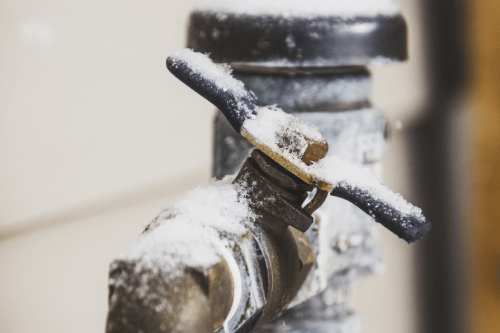Tips to Safeguard Your Pipes from Cold Weather: Expert Tips
Course DetailIn this article down the page you can locate a bunch of outstanding points in regards to 6 Ways to Prevent Frozen Pipes.

Cold weather can damage your plumbing, particularly by freezing pipelines. Right here's how to stop it from occurring and what to do if it does.
Introduction
As temperature levels drop, the danger of frozen pipes rises, possibly bring about costly repairs and water damage. Understanding exactly how to avoid frozen pipelines is essential for property owners in cold climates.
Prevention Tips
Insulating susceptible pipes
Cover pipes in insulation sleeves or use warmth tape to shield them from freezing temperatures. Focus on pipelines in unheated or exterior locations of the home.
Home heating techniques
Maintain interior rooms adequately heated up, especially locations with pipes. Open closet doors to permit warm air to flow around pipes under sinks.
Just how to recognize frozen pipes
Look for reduced water flow from taps, uncommon odors or noises from pipelines, and noticeable frost on revealed pipelines.
Long-Term Solutions
Structural modifications
Take into consideration rerouting pipes away from outside walls or unheated locations. Include extra insulation to attics, basements, and crawl spaces.
Upgrading insulation
Purchase high-grade insulation for pipelines, attic rooms, and wall surfaces. Correct insulation aids keep regular temperature levels and lowers the danger of frozen pipes.
Safeguarding Outdoor Pipes
Garden hose pipes and outside taps
Detach and drain garden tubes prior to wintertime. Install frost-proof spigots or cover outdoor taps with shielded caps.
Comprehending Frozen Pipelines
What causes pipelines to freeze?
Pipelines freeze when revealed to temperature levels below 32 ° F (0 ° C) for prolonged periods. As water inside the pipelines freezes, it expands, taxing the pipe wall surfaces and potentially creating them to rupture.
Threats and problems
Icy pipelines can bring about water system disruptions, property damage, and costly fixings. Ruptured pipelines can flood homes and trigger substantial structural damage.
Indications of Frozen Pipeline
Determining frozen pipelines early can avoid them from rupturing.
What to Do If Your Pipelines Freeze
Immediate activities to take
If you think frozen pipes, maintain faucets open to alleviate stress as the ice thaws. Utilize a hairdryer or towels soaked in warm water to thaw pipes gradually.
Conclusion
Preventing frozen pipes calls for proactive actions and quick responses. By recognizing the reasons, indications, and safety nets, property owners can shield their plumbing during winter.
5 Ways to Prevent Frozen Pipes
Drain Outdoor Faucets and Disconnect Hoses
First, close the shut-off valve that controls the flow of water in the pipe to your outdoor faucet. Then, head outside to disconnect and drain your hose and open the outdoor faucet to allow the water to completely drain out of the line. Turn off the faucet when done. Finally, head back to the shut-off valve and drain the remaining water inside the pipe into a bucket or container. Additionally, if you have a home irrigation system, you should consider hiring an expert to clear the system of water each year.
Insulate Pipes
One of the best and most cost-effective methods for preventing frozen water pipes is to wrap your pipes with insulation. This is especially important for areas in your home that aren’t exposed to heat, such as an attic. We suggest using foam sleeves, which can typically be found at your local hardware store.
Keep Heat Running at 65
Your pipes are located inside your walls, and the temperature there is much colder than the rest of the house. To prevent your pipes from freezing, The Insurance Information Institute suggests that you keep your home heated to at least 65 degrees, even when traveling. You may want to invest in smart devices that can keep an eye on the temperature in your home while you’re away.
Leave Water Dripping
Moving water — even a small trickle — can prevent ice from forming inside your pipes. When freezing temps are imminent, start a drip of water from all faucets that serve exposed pipes. Leaving a few faucets running will also help relieve pressure inside the pipes and help prevent a rupture if the water inside freezes.
Open Cupboard Doors
Warm your kitchen and bathroom pipes by opening cupboards and vanities. You should also leave your interior doors ajar to help warm air circulate evenly throughout your home.

Hopefully you enjoyed our excerpt on Prevent Frozen Pipes . Thank you so much for taking time to read through our posting. So long as you appreciated our page kindly remember to share it. I praise you for being here. Revisit us soon.
This Site